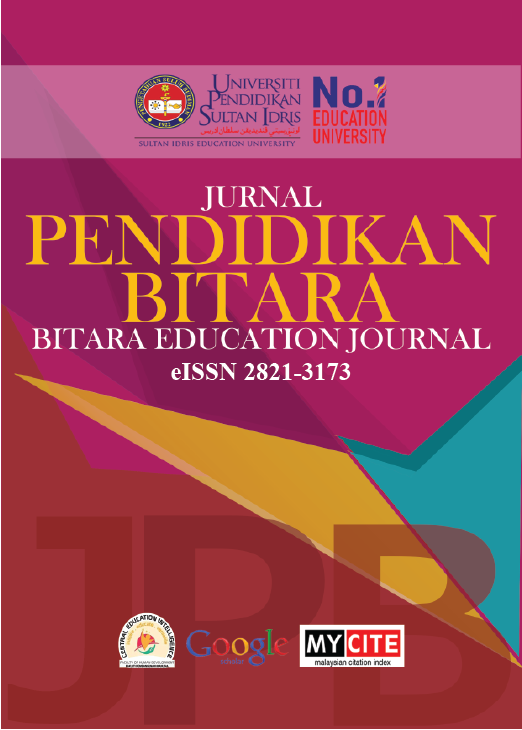Design of pop up book based on realistic mathematics education to improving spatial ability students of class VIII
DOI:
https://doi.org/10.37134/bitara.vol12.1.2019Keywords:
Pop up book, Realistic Mathematics Education, spatial abilityAbstract
Spatial ability is about mentally manipulating things and their components and is considered critical for different domains such as science, technology, engineering, and mathematics, it was also can understanding the relation and nature of geometry to solve mathematical problems in everyday life. This study aims to design teaching materials in the form of pop up books based on Realistic Mathematics Education (RME) to improve students' spatial ability in three-dimensional material. This type of research is the development research RnD (Research and Development) with the ADDIE model. This study discusses the design stage. The subjects of this study were teachers and students of eight-grade of Muhammadiyah Boarding School (MBS) Pleret Yogyakarta. The research data was obtained by interviewing to describe students' needs, and learning information used, as well as document analysis to analyze curriculum, learning materials, and teaching materials. Data analysis techniques use qualitative analysis. This study produced a pop up book design that was in accordance with the analysis of student needs, student characteristics, curriculum, materials, learning methods, and teaching materials. Pop up books are designed based on RME and are designed to improve students' spatial abilities. This research can be developed at the development, implementation, and evaluation.
Downloads
References
B. A. Jones. (2007). Instructional Design in a Business English Context, 1, 683–696.
Bluemel & Taylor. (2012). Pop Up Book A Guide For Teacher and Librarians. California Santa Barbara: Libraries Unlimited.
Cantürk-Günhan, Turgut, M., & Yılmaz, S. (2009). Spatial ability of a mathematics teacher: the case of Oya. IBSU Scientific Journal, 3(1), 151-158.
Gravemeijer. (1994). Developing Realistic Mathematics Education. Utrecht: Kluwer Academic Publishers Press.
Guay & McDaniel. (1977). The relationship between mathematics achievement and spatial abilities among elementary school children. Journal for Research in Mathematics Education, 211-215.
Güven & Kosa. (2008). The effect of dynamic geometry software on student mathematics teachers' spatial visualization skills. Turkish Online Journal of Educational Technology-TOJET, 7(4), 100-107.
Indriani, N & Hongki. (2017). Developing Learning Trajectory on The Circumference of A Cycle with Realistic Mathematics Education (RME). ICRIEMS. 1-9.
Karakuş, F., & Peker, M. (2015). The effects of dynamic geometry software and physical manipulatives on pre-service primary teachers’ van Hiele levels and spatial abilities. Turkish Journal of Computer and Mathematics Education (TURCOMAT), 6(3), 338-365.
Laurens et al. (2018). How Does Realistic Mathematics Education (RME) Improve Students' Mathematics Cognitive Achievements? EURASIA Journal of Mathematics, Science and Technology Education. 14(2). 569-578.
Linn, M. C., & Petersen, A. C. (1985). Emergence and characterization of sex differences in spatial ability: A meta-analysis. Child development, 1479-1498.
Makonye, J. (2014). Teaching Functions Using a Realistic Mathematics Education Approach: A Theoretical Perspective. IntJEduSci. 7(3). 653-662.
National Academy of Sciences. (2006). Acceleration of the recognition rate between grafted ligands and receptors with magnetic forces. Proceedings of the National Academy of Sciences of the United States of America, 44-45.
NCTM (National Council of Teacher of Mathematics). 2000. Handbook of Research on Mathematics Teaching and Learning, Editor: Douglas A. Grows. USA: Macmillan Library Reference.
Noviani, et al. (2017). The Effect of Realistic Mathematics Education (RME) in Improving Primary School Students’ Spatial Ability in Subtopic Two Dimension Shape. Journal of Education and Practice. 8(3). 112-126.
Olkun, S. (2003). Making connections: Improving spatial abilities with engineering drawing activities. International Journal of Mathematics Teaching and Learning, 1-10.
Özdemir, B. G. (2017). Mathematical Practices In A Learning Environment Designed by Realistic Mathematics Education: Teaching Experiment About Cone and Pyramid. European Journal of Education Studies, 3(5), 405-431.
Peck, F. (2015). The Intertwinement of Activity and Artifacts: A Cultural Perspective on Realistic Mathematics Education. School of Education Graduate Theses and Dissertations. pp. 2-10.
Qi, J., & Buechley, L. (2010). Electronic popables: exploring paper-based computing through an interactive pop-up book. In Proceedings of the fourth international conference on Tangible, embedded, and embodied interaction (121-128). ACM.
Uttal, D. H. & Cohen, C. A. (2012). Spatial thinking and STEM education: When, why, and how? Psychology of Learning and Motivation, 57, 147–181.
Downloads
Published
How to Cite
Issue
Section
License
Copyright (c) 2019 UPSI Press, Malaysia

This work is licensed under a Creative Commons Attribution-NonCommercial-ShareAlike 4.0 International License.





